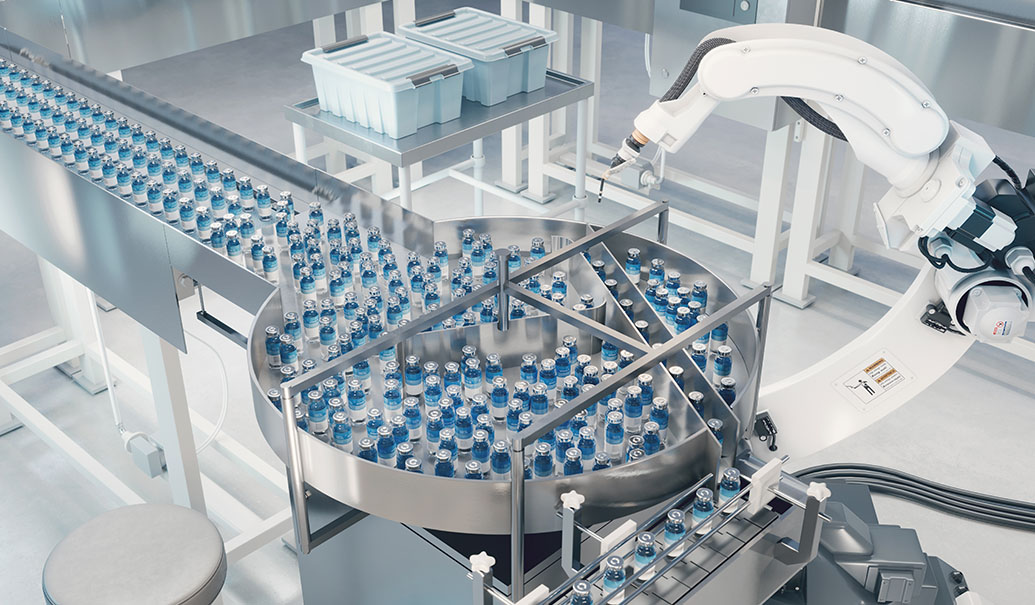We all want to make better decisions. Digital and virtual twins can help. They enable supply chain and manufacturing teams to create test environments by virtually mapping physical assets, networks or processes with end-to-end connectivity. Within these test environments, teams can run simulations to determine the performance and resilience of their operations. In short, digital and virtual twin technology enables better decision-making.
Historically, digital and virtual twin technology has only been deployed in industries with scale, and in those that aren’t hampered by regulations. Automakers have been leveraging digital and virtual twins for years, while other industries, such as pharmaceuticals, instead pursued more traditional solutions. But as global disruptions become more common and therapies become more complex, it will be vital for pharma to take advantage of this technology. And they’re not alone. It’s never been more possible for supply chains across industries to leverage digital and virtual twins.
Benefits of digital and virtual twin technology for supply chain and manufacturing
As more companies learn about the capabilities of digital and virtual twins, the technology is becoming an increasingly important part of an organization’s overall digital strategy. Some supply chain teams are even using it to simulate multiple disruptions at once to understand the holistic impact on their global supply chain. After running simulations, supply chain teams can proactively contact affected stakeholders and present a root cause analysis and propose alternative solutions, helping provide actionable intel for long-term strategic capacity planning.
Not surprisingly, companies across industries are leveraging digital and virtual twins to improve quality, reduce downtime, enhance their products, use equipment more efficiently and mitigate risk. Digital and virtual twins can increase machine utilization by up to 10% because they can simulate a disruption’s global impact in just 24 hours, rather than the standard 4-6 months.
One example of leveraging digital and virtual twin technology: a company was frustrated by a specific type of equipment that broke down too often, causing regular capacity constraints. Because replacing parts in the equipment took time and was expensive, the company began to keep extra parts on hand to reduce downtime. Still, they suspected there had to be a better and more affordable long-term solution.
In an effort to work within the equipment supplier’s procurement and planning process, the company used digital and virtual twin technology to build a simulation model that enabled team members to input various parameters and test “what-if” scenarios. This model—which was a standalone application with a user-friendly interface—could also rectify anomalies and allow team members to view parameters through dashboards, or equipment maintenance information through asset screens.
Being able to run tests in this simulated environment enabled the supply chain team to avoid the overstocking and understocking of spare parts. The model helped the team identify the optimal number of spare parts to keep on hand, making it easier to avoid costly overstocking and understocking. The team also used the model to identify and monitor production issues in real time, so they could identify problems and intervene earlier to prevent defects and improve quality.
Leveraging large data sets in digital and virtual twins
Digital and virtual twin technology also offers supply chains an opportunity to take advantage of their large, disparate data sets. This data can be used to capture and contextualize information on modeling, simulation and the performance of sites, processes, assets and more. One company accomplished this by coupling different types of data and information—including geopolitical data, economic data, financial information, commodity prices, raw materials prices and information from news events—with their historical supply chain data.
Using this large amount of data, the company’s digital twin was able to learn which factors are most critical to the supply chain and how they can cause delays. By simulating how everything from global events to out-of-stock materials can affect its supply chain, the company was able to successfully identify the flexibility of its operations and how it could minimize the recovery timeline across the global network.
Building digital and virtual twins at your company
Many supply chain leaders are finding that getting started with digital and virtual twin technology is less complicated than they envisioned. The first step is to execute a simple two-week assessment to explore the impact and readiness of your organization’s data and systems. From there, teams can build a digital and virtual twin with a simple data integration architecture. This architecture consists of four elements:
Data ingestion and processes: Define and establish connectors to extract data from the main supply chain platform and develop a process to blend and consolidate the relevant information.
Semantic ontology: Establish connections between supply chain elements to accurately represent the end-to-end supply chain network.
Smart analytics: Define a library of algorithm and optimization engines that can be used to explore supply chain benefits that aren’t obvious at a surface level.
Visualization layers: Generate dashboards and business intelligence that can show supply chain priorities and recommended actions.
For supply chain leaders unsure about how to convince the C-suite of the technology’s potential, they can use solutions that simulate how digital and virtual twins can lead to improved outcomes.
Digital and virtual twins at pharma and beyond
While digital and virtual twin technology can help supply chains across industries, pharmaceutical companies have much to gain. They’re facing challenges—increasing costs, declining profit margins, market saturation, the need for fast-paced supply chains and tighter regulations—that have prompted the industry to turn to digital solutions for innovation, scalability and keeping up with market demand. Digital and virtual twin technology has the potential to transform the industry by reducing costs and making products and assets more durable.
Across pharma and other industries, digital and virtual twins offer value beyond supply chains. They can generate real-time data for research and development, regulatory and safety compliance, network optimization, quality monitoring, commercial spend optimization, tailored customer engagement, competitive intelligence and more. The faster companies adopt digital and virtual twin technology, the sooner they can scale and innovate.
Add insights to your inbox
We’ll send you content you’ll want to read – and put to use.













